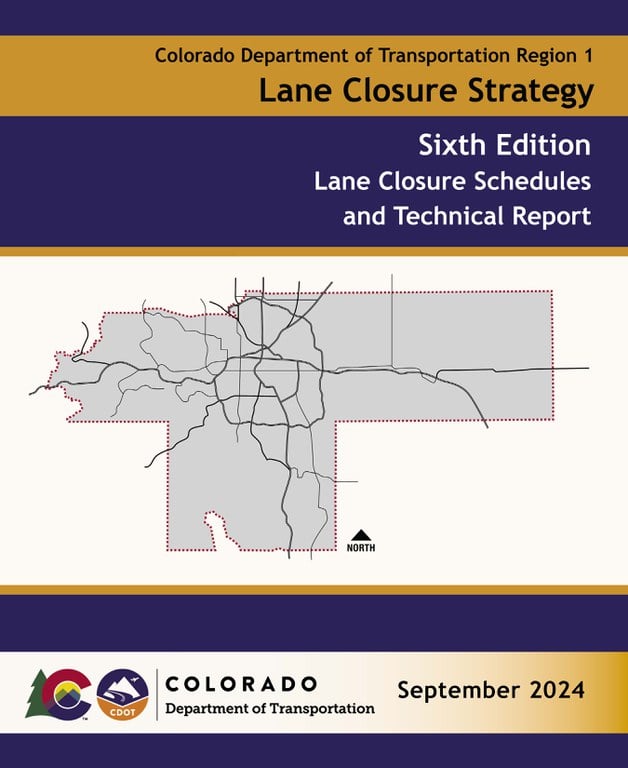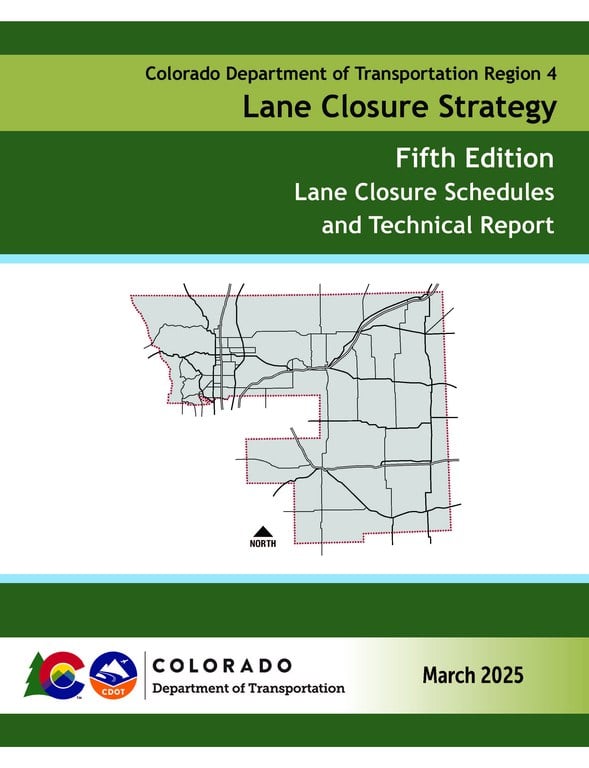Work Zone Safety
Every year, CDOT undertakes hundreds of construction projects across the state, in addition to conducting highway maintenance to keep those traveling on our highways safe. We focus on strategies and professional training to increase safety within work zones. Click here to learn more about the cone zone.
Lane Closure Strategies
The full lane closure strategic analysis project was developed to address a growing interest in implementing temporary full roadway closures of state highways to facilitate roadway construction and maintenance activities. Full closures can provide a means for completing highway work in a shortened period of time, saving time and resources over a phased construction approach.
Currently, CDOT Staff considers full closure opportunities on a case-by-case basis, applying engineering judgment and various factors to weigh the decision. The purpose of the full closure strategic analysis is to provide a uniform decision process that CDOT Staff can use to efficiently and effectively evaluate and approve full closures. Use of the decision tool in anticipated to broaden the consideration and use of full closures for highway work and ensure successful implementation.
Full Closure Strategy Analysis Report
The full closure strategic analysis was conducted to create a decision process whereby full roadway closures for construction and maintenance activities can be evaluated and approved or denied by CDOT Traffic personnel. The study reviewed current full closure practices in Colorado and throughout the country, gathered stakeholder input, and employed an iterative development process to reach a systematic decision tool that can be applied to judging the merits of full closure scenarios. A number of case studies were created to more fully understand the methodology and adjust the tool to best match real-world scenarios. Project deliverables include a technical report and a series of electronic forms that can be used by CDOT to work through the process.
Region 1 Lane Closure Strategy
The intent of this Lane Closure Strategy (LCS) is to establish uniform criteria and authoritative guidance for scheduling lane closures in Region 1. The LCS was formulated to strike an appropriate balance between delays to the traveling public in the work zone and the cost of construction and maintenance. It is applicable to single lane closures (and multi-lane closures on five-or-more-lane roadways) related to construction and maintenance activities on roads controlled by CDOT. It is based on extensive data analyses and estimates of delays expected during lane closures. The LCS addresses weekday and weekend traffic demand and considers temporal variations in traffic volume occurring over a typical 24-hour period. The LCS also accounts for seasonal variations in traffic volumes where appropriate.
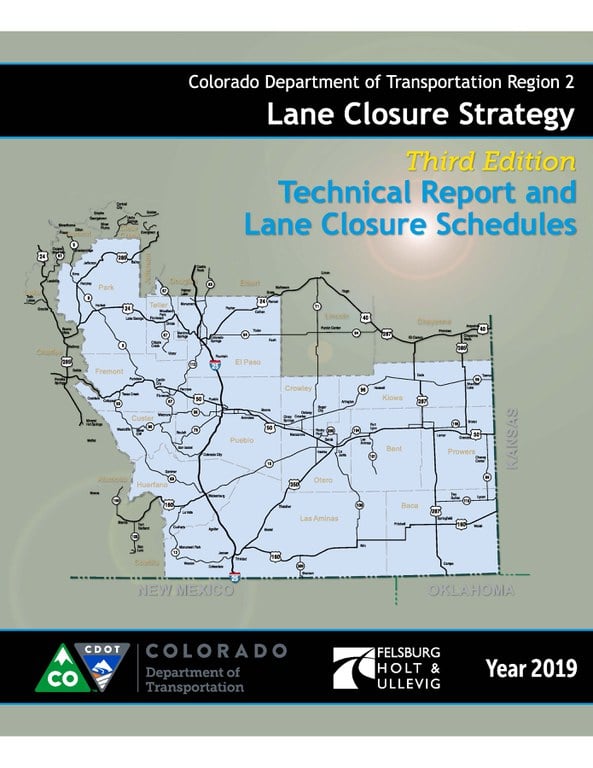
Region 2 Lane Closure Strategy
The intent of this Strategy is to establish uniform criteria and authoritative guidance for scheduling lane closures in Region 2. The Strategy was formulated in order to strike an appropriate balance between delays to the traveling public in the work zone and the cost of construction and maintenance. It is applicable to single lane closures (and multi-lane closures on six-lane roadways) related to construction and maintenance activities on roads controlled by the Colorado Department of Transportation. It is based on extensive data analysis and estimates of delays expected during lane closures. The Strategy addresses weekday traffic demand and considers temporal variations in traffic volume occurring over a typical 24-hour period. The Strategy also accounts for seasonal variations in traffic volumes.
To obtain a copy of the Region 2 Lane Closure Strategy, please contact James Biren ([email protected]).
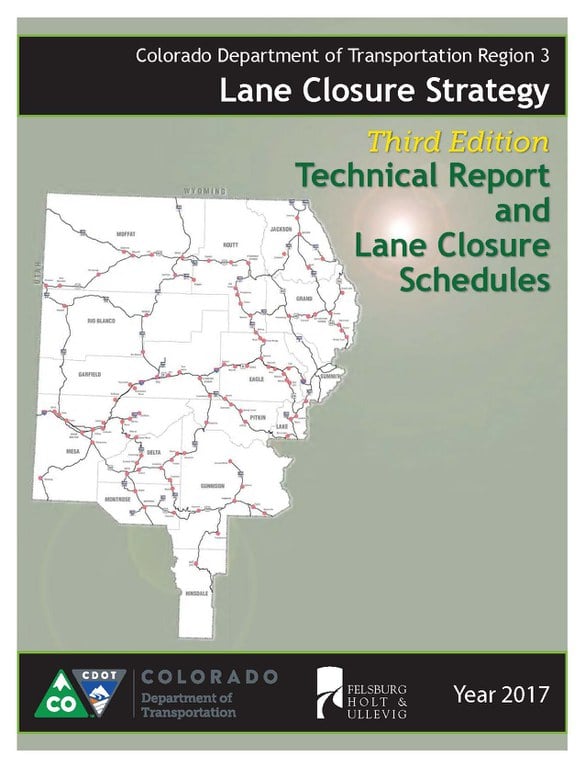
Region 3 Lane Closure Strategy
The intent of this Third Edition of the Colorado Department of Transportation (CDOT) Region 3 Lane Closure Strategy is to update criteria and guidance for scheduling lane closures on all state highways in the region. the Strategy was formulated in order to strike an appropriate balance between delays to the traveling public in the work zone and the costs of construction and maintenance. It is applicable to lane closures related to construction and maintenance activities on roads controlled by the Colorado Department of Transportation. It is based on extensive data analysis and estimates of delays expected during lane closures. The Strategy addresses weekday and weekend traffic demand and considers temporal variations in traffic volume occurring over a typical 24-hour period. The Strategy also accounts for seasonal variations in traffic volumes.
To obtain a copy of the Region 3 Lane Closure Strategy, please contact Mark Bunnell ([email protected]).
Region 4 Lane Closure Strategy
The intent of this Lane Closure Strategy (LCS) is to establish uniform criteria and guidance for scheduling lane closures in Region 4. The LCS was formulated to strike an appropriate balance between delays to the traveling public in the work zone and the cost of construction and maintenance. It is applicable to single lane closures (and multi-lane closures on six-lane roadways) related to construction and maintenance activities on roads controlled by the Colorado Department of Transportation (CDOT). It is based on extensive data analyses and estimates of delays expected during lane closures. The LCS addresses weekday and weekend traffic demand and considers temporal variations in traffic volume occurring over a typical 24-hour period. The LCS also accounts for seasonal variations in traffic volumes.
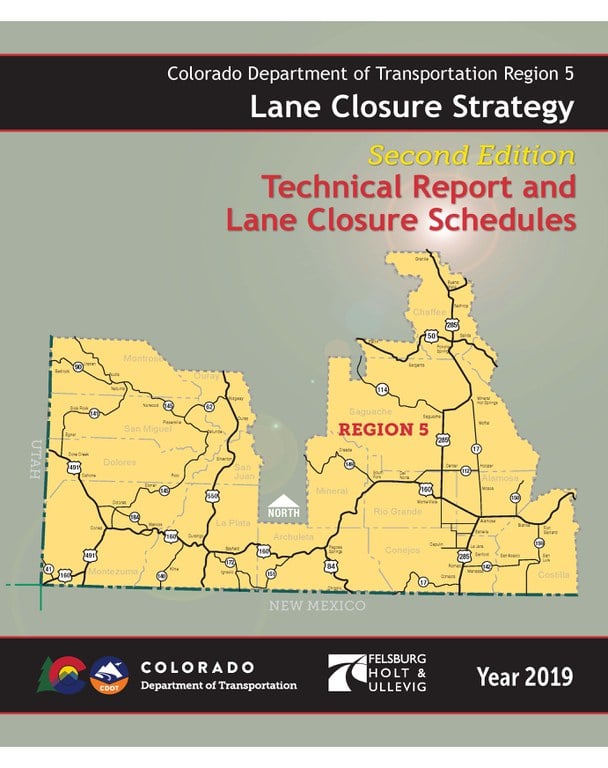
Region 5 Lane Closure Strategy
This Lane Closure Strategy (LCS) establishes uniform criteria and authoritative guidance for scheduling lane closures in Region 5. The LCS was formulated to strike an appropriate balance between delays to the traveling public in the work zone and the cost of construction and maintenance. It is applicable to single-lane closures (and multi-lane closures on six-lane roadways) related to construction and maintenance activities on roads controlled by the Colorado Department of Transportation (CDOT). It is based on extensive data analyses and estimates of delays expected during lane closures. The LCS addresses weekday and weekend traffic demand and considers temporal variations in traffic volume occurring over a typical 24-hour period. The LCS also accounts for seasonal variations in traffic volumes.
To obtain a copy of the Region 5 Lane Closure Strategy, please contact Anna Barstatis ([email protected]).
Work Zone Safety and Mobility
The Federal Highway Administration (FHWA) rule on Work Zone Safety and Mobility led to the development and implementation of CDOT Policy Directives, as well as new procedures, specifications, and training requirements. CDOT implemented a Transportation Management Plan that lays out a set of coordinated strategies, describes how these strategies will be used to manage the work zone impacts of a project, and details training requirements.
Work Zone Law Enforcement
Safe and Effective Use of Law Enforcement Personnel in Work Zones Training
This training is required for all law enforcement officers participating in work zone patrols.
- Registration for the training is available through your agency
- Initial training must be completed in person
- A refresher course is required every three (3) years from the completion of the in-person training and may be completed online
Instructor Addition/Deletion Form
Agencies are required to keep an up-to-date list of all instructors and are allowed a maximum of two (2) instructors per agency, of which, one (1) is designated to sign the certification card.
For additional information, please contact [email protected].


